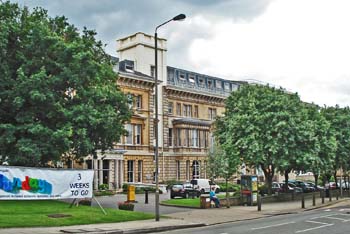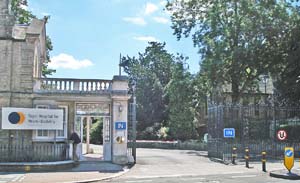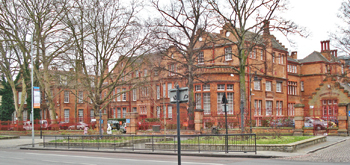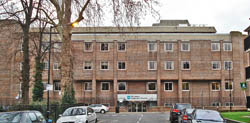Originally posted by Jeff Leahy
View Post
What we have: Aaron Kozminski in Mile End Old Town Workhouse (July 1890 and February 1891) and in Colney Hatch & Leavesden.
It seems that the Jewish Home in Stepney Green was a Jewish Workhouse and later it belonged to the Nightingale in Surrey. Later again we find the Jewish Hospital in Stepney Green.
And I could find another Asylum in Surrey with a Seaside Home (Royal Hospital for Neuro-Disability).
Nightingale:
“The charity’s origins can be traced back to 1840. The three original homes were called the Hand in Hand Asylum, the Widows’ Home Asylum and the Jewish Workhouse, also known as the Jewish Home. They were established in the old Jewish quarter in London’s East End to cater for the needs of poor Jewish people”
“The Hand in Hand Home occupied the following premises: 5 Duke's Place (from 1843), 22 Jewry Street (from 1850), Wellclose Square (from 1854) and 23 Well Street, Hackney (from 1878). The Widow's Home was first based at 22 Mitre Street, then 19 Duke Street (from 1850), 67 Great Prescott Street, Goodmans Fields (from 1857) and later moved next door to the Hand in Hand in 1880.
The Jewish Workhouse was founded in 1871 by a movement led by Solomon Green, the son of Abraham Green one of the founders of the Widow's Home. The first premises were at 123 Wentworth Street. In 1876 the Home moved to 37-9 Stepney Green.”
Surrey:
Nightingale
105 Nightingale Lane, Wandsworth Common, SW12 8NB/ Surrey
“…and the Jewish Workhouse, also known as the Jewish Home (1871), at 37-39 Stepney Green.”
Royal Hospital for Neuro-Disability
West Hill, Putney, SW15 3SW/ Surrey
“In 1885 a holiday home - Seaside House - was established for the inmates (and later pensioners) in St Leonard's-on-Sea. (The house was sold in 1901.)” (106 Queen Victoria Street?)
“In 1947 the Hospital was informed that it would be nationalised under the NHS Act (1946), along with the Jewish Hospital and Home for Incurables in Tottenham and the British Home and Hospital for Incurables in Streatham. All three homes appealed against this on the grounds that they would be able to provide more specific care to their patients, focussed on long-term needs. In 1950 the Ministry of Health withdrew its claim.”
London/East End:
Jewish Home and Hospital for Incurables
295 High Road, South Tottenham, N15 4RT
London Jewish Hospital
Stepney Green, Tower Hamlets, E1 3LB
In Mile End Road were two Jewish homes (1891):
Portuguese and Spanish Jew´s hospital between 251-255 Mile End Road.
Jewish Home (Samuel Shuter, supt.), 37-39 Stepney Green Mile End Road.
See my post 877:
I am not sure whether the "Seaside Home" belonged to an asylum or to the police or whether it was located at the coast. Maybe, it was plain and simple a police´s barrack in London called "Seaside Home", who knows...
But I am sure that the Police already known "Kosminski" in October 1888. In this case, I do not think that they were waiting with Lawende & Schwartz for an ID until the second half of 1890/ Beginning 1891.
"Oh no! ... I only had a short look at him" (Major Smith/probably Lawende) and "Would you know him again? - I doubt it. The man and woman were about nine or ten feet away from me."...
...does not sound like "A good view of the murderer"...
I guess that Schwartz and Lawende were confronted with "Kosminski" in October 1888 but failed.
A third witness found by the police in the second half of 1890? Why not? If "Kosminski" was a Prime Suspect since October 1888 then the police did not have the Seaside Home witness at the time of the murders. When they had found the witness the MET police informed the City Police to bring "Kosminski" to the place "Seaside Home". I guess, all the time "Kosminski" was more a City Police suspect than a MET Police suspect.
Yours Karsten.









Leave a comment: